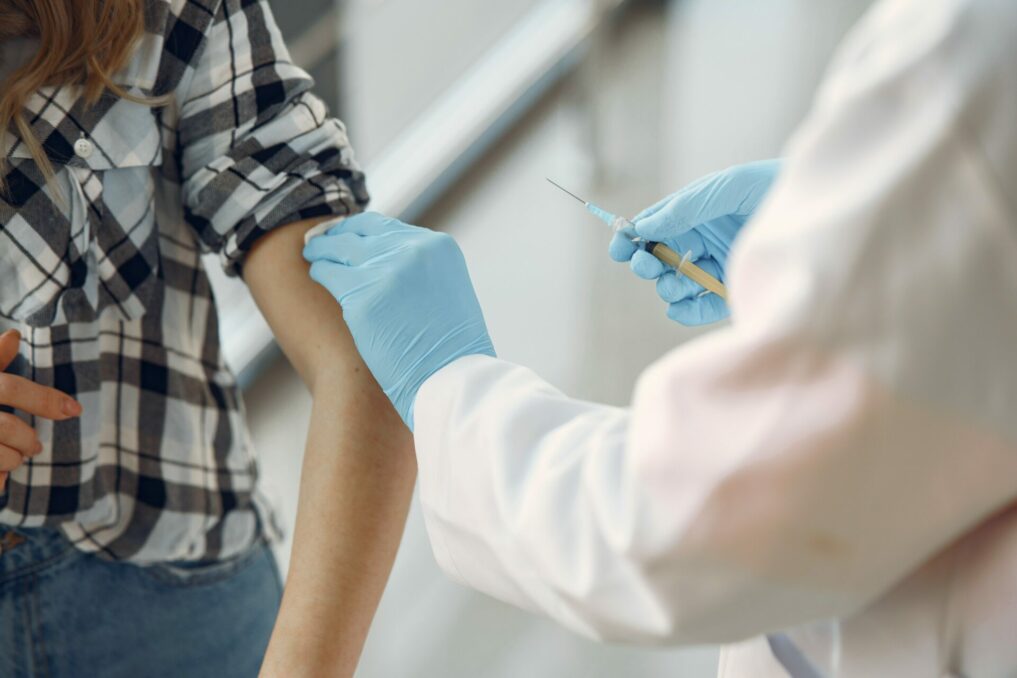The Centers for Disease Control and Prevention (CDC) has issued a warning about an increase in COVID-19 hospitalizations in the United States. Recent data indicates a sharp 10% spike, marking the steepest rise since December 2022. During the week of July 15, COVID-19 hospitalizations rose to over 7,100 from the previous week’s 6,444. Additionally, COVID-related emergency room visits increased from 0.49% a month ago to 0.73% on July 21.

Dr. Brendan Jackson, the CDC’s Covid incident manager in Atlanta, expressed concern over the situation, stating, “After roughly six, seven months of steady declines, things are starting to tick back up again.” He believes this could be the beginning of a late summer wave, particularly in the Southeast, where the spikes have been significant. Moreover, the emergence of “mutagenic” sub variants in Asia has added to the growing apprehension.
Despite the recent increase in COVID-19 hospitalizations and emergency room visits in the United States, CDC spokesperson Kathleen Conley has highlighted that the overall COVID-19 rates in the country are still relatively low. In fact, she described them as being at “near-historic lows.” This means that while there has been a concerning uptick in hospitalizations and cases, the situation is not as severe as some previous peaks experienced during the pandemic.
One positive aspect amidst the rise in hospitalizations is that infections related to COVID-19 are declining on the whole. This is a significant development and provides a glimmer of hope in the fight against the virus. The declining trend in infections indicates that the measures taken by health authorities, such as widespread vaccination campaigns and public health guidelines, have been effective in reducing transmission rates.

It is essential to recognize that these achievements have been possible due to the collective efforts of individuals, communities, healthcare workers, and government agencies. Public adherence to safety protocols, responsible behavior, and high vaccination rates have played a vital role in mitigating the spread of the virus and reducing severe cases and fatalities.
While the recent increase in hospitalizations and emergency room visits warrants close monitoring, the broader context suggests that the situation remains relatively stable and manageable. However, this does not diminish the importance of continued vigilance and adherence to preventive measures. The unpredictable nature of the virus and the emergence of new variants highlight the need to remain cautious and responsive to any potential changes in the epidemiological landscape.
Health authorities and experts will likely closely monitor the situation and adjust strategies as needed to address any fluctuations in COVID-19 activity. This could involve targeted vaccination campaigns, booster doses for specific groups, or reinforcing public health messaging to encourage ongoing compliance with preventive measures.
Dr. Marc Siegel, a professor of medicine at NYU Langone Medical Center, shared his observations, confirming a summer surge in COVID cases. However, he remained optimistic, saying, “I don’t see this as a harbinger of another surge.” Dr. Siegel believes that the abundance of immunity from prior infections and vaccinations, coupled with the fact that most current infections are mild and hospitalizations have only slightly increased, should allay some concerns.
In light of the recent uptick in hospitalizations, Dr. Siegel put forth a proactive approach to combat any potential future surge in COVID-19 cases. He mentioned that he is likely to recommend the new XBB subvariant booster in the fall, especially for individuals in high-risk groups who have not received a recent infection or vaccination. This recommendation reflects his emphasis on staying ahead of the virus by enhancing immunity in vulnerable populations.

The “XBB subvariant booster” likely refers to a specific booster shot that targets emerging variants of the virus, such as the “mutagenic” sub variants emerging in Asia, as mentioned earlier in the article. By recommending this booster for high-risk groups, Dr. Siegel aims to bolster their immunity and reduce the likelihood of severe illness and hospitalizations.
The mention of “prior infection or vaccine” highlights the importance of immunity gained through previous COVID-19 infections or vaccinations. It acknowledges that many individuals already have some level of protection against the virus, and the booster can further strengthen their immunity against potential new variants.
While early indicators of COVID-19 activity have preceded the increase in hospitalizations, it’s essential to keep in mind that the overall COVID situation in the US remains relatively stable. Experts advise people to continue practicing preventive measures, such as wearing masks in crowded places and maintaining good hand hygiene.
The US is experiencing a rise in COVID-19 hospitalizations and emergency room visits, particularly in the Southeast. While this could be the start of a late summer wave, experts remain cautiously optimistic due to the relatively low overall infection rates and declining COVID-related deaths. To stay ahead of any potential surge, health authorities may recommend booster shots for high-risk groups in the future. It is crucial for individuals to stay vigilant and follow public health guidelines to help control the spread of the virus.













